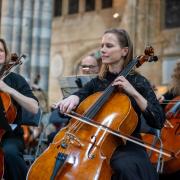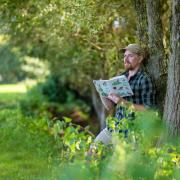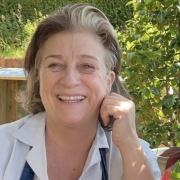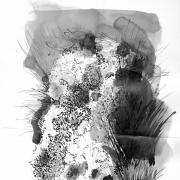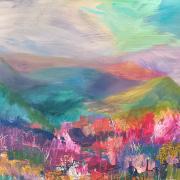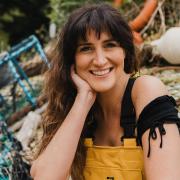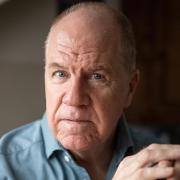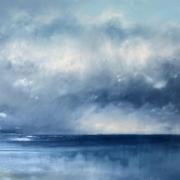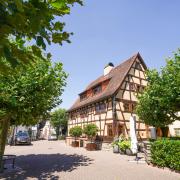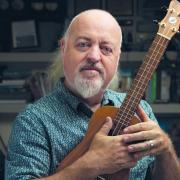Paul Mackenzie meets the pioneering explorer who has been to some of the toughest places on earth and survived to tell the tale
On chilly days Ann Daniels feels the cold in her toes but she knows the discomfort is a small price to pay. Had things worked out differently, she might not still have her toes. Ann has braved some of the harshest climates on earth, walking to the poles in fierce winds and temperatures below -40C.
“I knew if frostbite went below the first knuckle that’s when you start thinking about removing bits of your body,” she says. “There were times when we were so far behind schedule that there was nothing we could do about getting it. There was wet gangrene too and every time my middle toes hit the front of my boots it would send a wave of pain up my body so I knew it was doing damage but I couldn’t stop.
“I thought about losing my little toes and thought that would be okay and the middles toes, well, yes ok, but if it reaches my big toes, I’ll stop. As it is, I didn’t lose any toes although the ends of my toes are not beautifully rounded and they are a little bit hard to the touch. When it gets cold, even in this country, I feel it in my toes first!”
It’s all a far cry from her days working in a bank but Ann has no regrets about the dramatic change of direction which led to her being part of the first all-female teams to reach both the North and South Poles.
“The Antarctic is the harshest, coldest, windiest place, the wind is always in your face,” she explains. “There are times when you don’t think you will get there but you know that every mile you go is a mile nearer your goal.
“In the Arctic the temperatures might not be much different but because it’s a marine environment it’s a matter of surviving. The current is moving the ice so for every step you take forward the ice moves you backwards. There are huge ice walls which you have to haul your 250lb sledge over; there are places where the ice is thin and you go through it. The conditions are appalling, you have frostbite and there are polar bears.”
It’s not how many people would consider spending their lives and for a long time it wasn’t Ann’s plan either: “I never thought I would be a polar explorer, I had a life, a husband, a job in a bank and I thought that was it.”
Ann grew up in Bradford, West Yorkshire, the youngest of five children and the only girl. “We were always daring each other to do things and it was always in my nature to compete. We lived on an estate and we were always outside. My brothers made no concessions for me because I was a girl, they gave no quarter and I just had to get on with that. I loved my childhood and I was very happy to challenge them and beat them at their own games.”
When she left secondary school she had thoughts of joining the police or RAF but poor eyesight meant she was forced to think again. Instead she wrote to banks around the city and was offered a job at Nat West where she worked through the ranks to become assistant manager.
She left the bank after a long process of IVF treatment was successful and she gave birth to triplets in 1994 but 18 months later she was at a low ebb. After moving to Yeovil for her husband’s job with the RAF, her marriage was failing and that’s when she saw the newspaper advert that changed her life.
“It was asking for normal people to join the first all-female team to walk to the pole,” recalls Ann, who now lives in Whimple. “I applied but I didn’t think I could do it, but the training weekend on Dartmoor sounded brilliant. I was going through some difficulties personally and thought getting away for a weekend would be good.
“I am a believer in opportunities and that if something comes your way you should think of reasons why you can do it, not reasons why you can’t but that weekend was tough. I couldn’t do it.
“There were a lot of very strong women there and I didn’t think I had recovered from having children. I thought this wasn’t for me and I didn’t know what the hell I was doing there but the media latched on to me because I had three young children and they started asking me questions. The kept asking me what it would be like to go to the North Pole and I kept saying it would be amazing and life-changing. Over time I came to believe it.”
The selection for the team wasn’t to be made until after the second training weekend nine months later and Ann spent the intervening time training hard between caring for her three young children. Hard hours exercising and learning to read maps while the children slept paid off when she was selected as one of the strongest contenders and given a place in the first group of the relay to the pole.
“Being in that group meant I would face the toughest, the coldest, the harshest stage and that I didn’t get to the pole but I was away for three-and-a-half weeks and I knew I had found what I was meant to do and something I was really good at.”
In 2000, Ann and other women from that expedition skied 700 miles to the South Pole and she has since skied the whole way to the North Pole. She is now a motivational speaker and is writing a book about her experiences and is working to help others achieve the apparently impossible.
In April Ann will be returning to the Arctic as part of a scientific expedition on climate change and will ski the last two degrees of latitude to the North Pole working with scientists and collecting vital data on this fragile part of our planet
She adds: “I am also working with a mental health charity which is very dear to me because my daughter had mental health issues and what we want to do is to take six young mental health patients the last 60 miles to the North Pole.
“We want to raise money and awareness about the need to help these young people achieve and to show that they can still have these experiences.”
Ann, who is now 52, is also passionate about inspiring other women. “I would love to see more women explorers. I think the problem is that women put their own limitations on themselves but there are lots of women doing extraordinary things.
“The more people who do these things, the more people will be encouraged to try it and to stop making excuses for why they can’t. As women we should stop believing we can’t and shouldn’t do things. Women can do so much more.
“I have done interviews where I have had to justify myself because I am a mother of young children who has gone away to do these things. A man would never be asked those things. I am not just defined by my role as a mother. I was doing what I had a passion for and I think that helped me bring more to the role of parent.
“It also allowed me to be a full-time mother - the expeditions could be two years apart and in between that I would be with my children. If I had stayed in the bank I would have been working from 8am to 6pm and I would not have been able to see them as much.
“The dangers are there but I understood them and I would make decisions based on my need to keep safe and alive and to get back, the difference between losing a toe and losing a life.”




